Mold for President: A Fungus Among Us
Mold, a seemingly innocuous substance, can wreak havoc on homes, buildings, and health if left unchecked. It’s a silent intruder, often lurking in unseen corners, behind walls, or under floorboards, slowly spreading its destructive presence.
Mold damage is not only unsightly but can also pose serious health risks and compromise the structural integrity of a building. In this blog post, we’ll delve into the insidious nature of mold, its causes, effects, and how to effectively deal with mold damage.
The Stealthy Invader: Understanding Mold
Mold is a type of fungus that thrives in damp, humid environments. It reproduces by releasing spores into the air, which can settle on surfaces and begin to grow under the right conditions. Common types of indoor mold include Aspergillus, Penicillium, and Stachybotrys chartarum (commonly known as black mold).
Causes of Mold Growth
Mold requires moisture, warmth, and organic material to grow. Some common causes of mold growth include:
- Water Leaks: Leaky pipes, roofs, or windows can create damp conditions ideal for mold growth.
- Poor Ventilation: Inadequate ventilation in bathrooms, kitchens, or basements can lead to moisture buildup.
- High Humidity: Areas with high humidity levels, especially in climates prone to moisture, are at risk.
- Flood Damage: Flooding from storms or plumbing mishaps can introduce large amounts of water into a building, leading to rapid mold growth if not properly dried out.
Effects of Mold Damage
The effects of mold damage can be far-reaching and detrimental:
- Structural Damage: Prolonged exposure to mold can weaken wood, drywall, and other building materials, compromising the structural integrity of a building.
- Health Risks: Mold spores can trigger allergic reactions, respiratory issues, and aggravate asthma symptoms. Certain types of mold, such as black mold, produce mycotoxins that can cause more severe health problems with prolonged exposure.
- Property Damage: Mold can cause staining, discoloration, and unpleasant odors, reducing the aesthetic appeal and resale value of a property.
- Legal and Financial Consequences: Mold damage can lead to costly repairs, insurance claims, and even legal disputes, particularly if it’s discovered during a real estate transaction.
Dealing with Mold Damage
Prompt action is crucial when dealing with mold damage. Here are some steps to take:
- Identify and Address the Source: Conduct a thorough inspection to identify the source of moisture and address any leaks or ventilation issues.
- Containment: Isolate the affected area to prevent further spread of mold spores. Use plastic sheeting and tape to seal off doors, vents, and other openings.
- Remediation: Depending on the extent of the mold damage, professional remediation may be necessary. Certified mold remediation specialists can safely remove mold-infested materials and treat affected surfaces with antimicrobial solutions.
- Drying and Dehumidification: Proper drying and dehumidification are essential to prevent mold from returning. Use fans, dehumidifiers, and thorough drying techniques to remove excess moisture from the air and building materials.
- Prevention: Implement preventive measures to avoid future mold growth, such as repairing leaks promptly, improving ventilation, and maintaining optimal indoor humidity levels.
Conclusion
Mold damage is a serious issue that requires immediate attention and professional intervention. By understanding the causes and effects of mold growth and taking proactive measures to address moisture problems, homeowners and property managers can safeguard their health and property from the insidious threat of mold. Remember, when it comes to mold damage, prevention is key.
